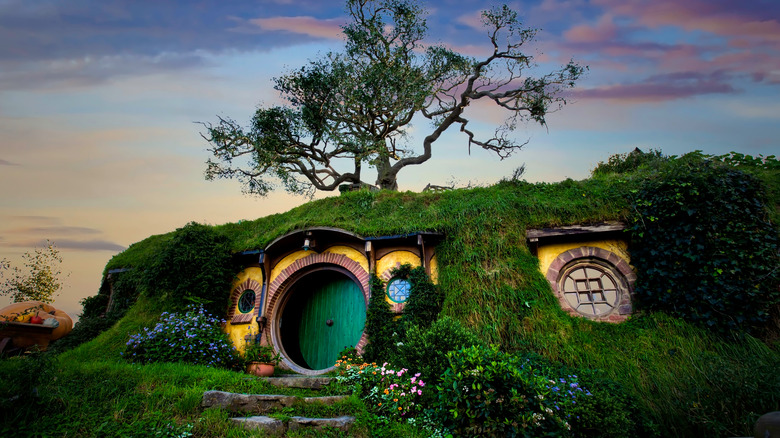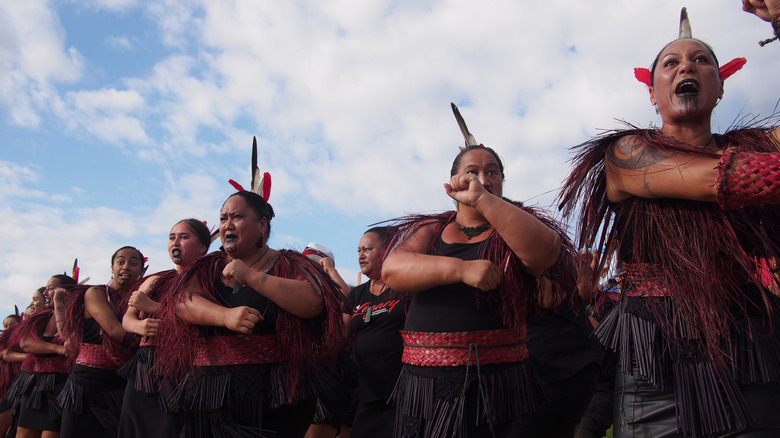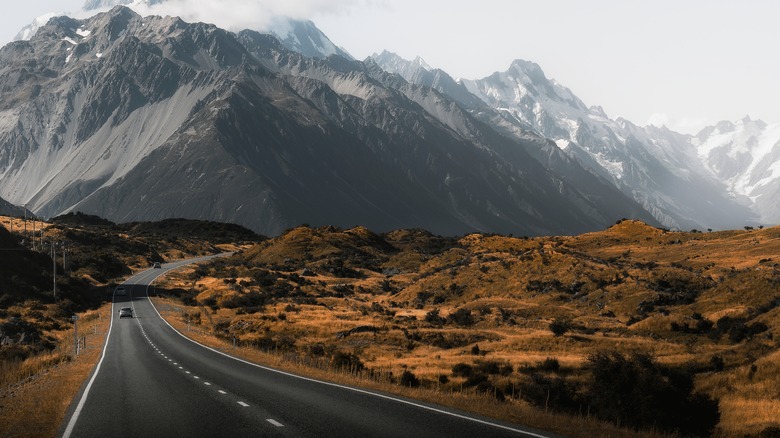Why Most Of New Zealand Has Nobody Living In It
Ah, New Zealand. Home of rugged, gorgeous landscapes, tiny flightless kiwis, terrifying pre-rugby haka dances, and equally adorable Hobbit holes (pictured above) where all those little Shire folk from "Lord of the Rings" live. But as any Kiwi will tell you — the person, not the bird — most of New Zealand is just vast, wide-open wilderness.
The World Population Review says that about 5.2 million people live in New Zealand as of 2023. Massey University says that about half of those people — over 2.4 million — live in the country's five most populous cities. Out of those, almost 1.6 million live in the most populated city, Auckland — that's about 30% of the entire population. Furthermore, Move Hub states that more than 86% of the population lives in urban areas. To put things in proper perspective: New Zealand's landmass is the same size as the United Kingdom's, as My Life Elsewhere shows, but the U.K.'s population is over 67 million. That's 13 times greater than New Zealand's.
As for why New Zealand is so empty, the Map Kiwi explains that New Zealand plays a delicate balancing act between preserved habitats, mountainous areas, farmland, and areas suitable for human settlements. But more critically, New Zealand Immigration explains that New Zealand was the very last place settled on Earth. Polynesian sailors didn't show up there until a scant 700 to 800 years ago. The rest of the world had filled out by then, and New Zealand has been catching up ever since.
The Maori, the Dutch, the English, the Shire
New Zealand has always been on the edge of civilization. As the Encyclopedia of New Zealand explains, humanity started spreading out of Africa about 100,000 years ago, and eventually splintered off into all the different people and cultures we've got today. Settlers landed in New Zealand up to 500 years after they landed on Tahiti and Hawaii in the middle of the Pacific Ocean.
Looking at a world map, it's easy to see why. Folks think of New Zealand as adjacent to Australia, but really, as the Australia ETA says, it's over 4,000 kilometers away. Mindblowingly, that's longer than the distance from Iceland to Greece, as DistanceFromTo shows. In other words, not only was New Zealand the last place on Earth to be inhabited by humans, it's still really, really hard to get to. A global flight path map on Esri shows us that New Zealand occupies one of the least densely traveled nodes on Earth.
After the Maori arrived on New Zealand from 1200 to 1300 C.E., Dutch explorer Abel Tasman (yes, like Tasmania) found it over 300 years later in 1642 and named it "Nieuw Zeeland," a name that stuck. The English explorer James Cook showed up 127 years later in 1769, claimed it for the English crown, and New Zealand eventually became independent in 1907. Only very recently has New Zealand's population had a chance to grow.
On the edge of civilization
This brings us to the habitability of New Zealand's land. First off, New Zealand Trails says that 30% of the entire country is preserved, national parks. The New Zealand landscape stayed undisturbed for most of its life and needs to be kept beautiful. Secondly, remember that New Zealand is separated into two main islands: North Island and South Island. NewZealand.com says that two-thirds of South Island and one-fifth of North Island are mountainous. This explains why much of South Island is unusable for development purposes, and also why the World Population Review says that almost 80% of the country's population lives on North Island. To add to all this, Massey University also says that at least 50% of New Zealand's land is devoted to agriculture to keep people alive. About 73% of that land goes to livestock.
All in all, taking into account New Zealand's ratio of agricultural land, preserved land, land suitable for development, how difficult it is to reach the country, or even just fly supplies out there, it's easy to see why most of its landmass is devoid of people — and hobbits. In fact, The Guardian explains that this could cause problems in the future as New Zealand's population grows. Auckland, the biggest city, could grow to 2.4 million in 30 years, and the country's Maori population could exceed 1 million. It's a good thing folks have so much nature around them that they can use to escape on the weekend.


